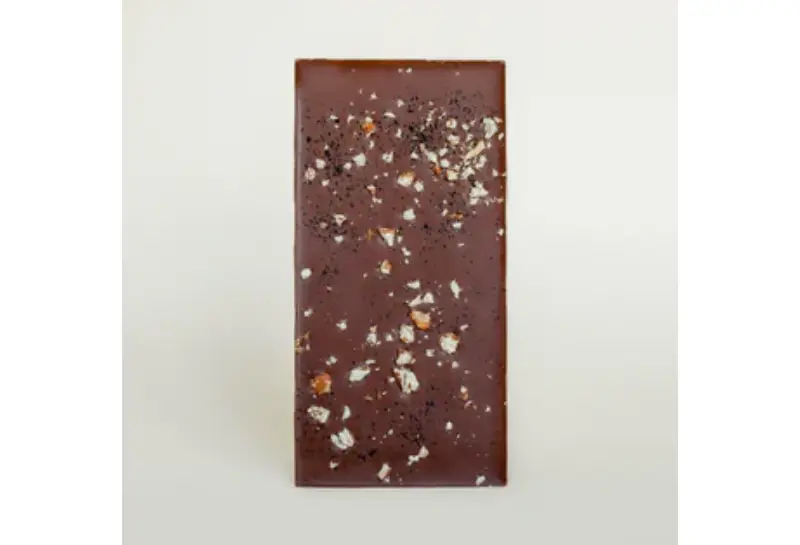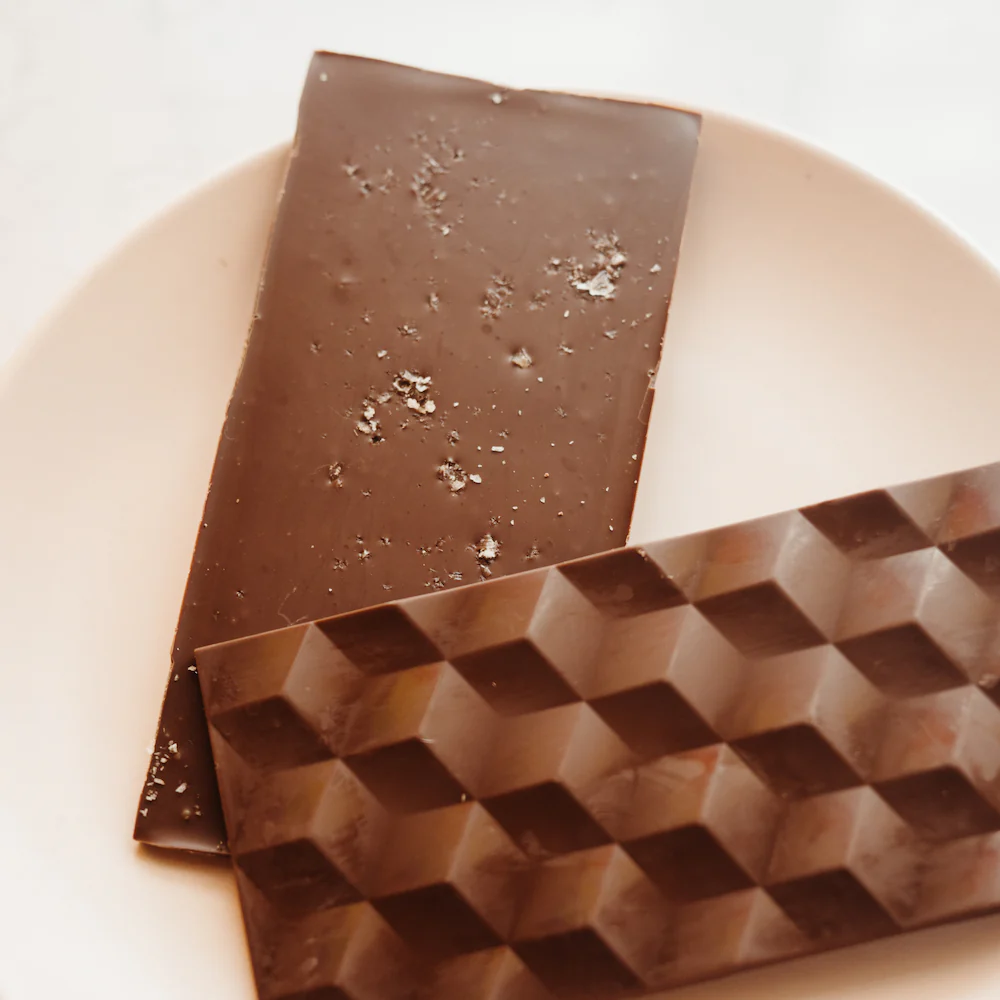
What’s the Difference Between Dark and Milk Chocolate Bars?
Chocolate is one of the most beloved treats worldwide, enjoyed in various forms and flavors. Among the most popular types are dark chocolate and milk chocolate bars. While both are delicious, they differ significantly in terms of ingredients, taste, nutritional value, and even their impact on health. If you’ve ever wondered what sets these two apart, this guide will break down the key differences, with a special focus on milk chocolate bars, to help you understand which one might suit your preferences and dietary needs.
Ingredients: The Core Difference
The primary distinction between dark and milk chocolate bars lies in their ingredients. Understanding what goes into each type of chocolate is essential to appreciating their unique characteristics.
Dark Chocolate Bars
Dark chocolate is made from cocoa solids, cocoa butter, and sugar. The percentage of cocoa solids in dark chocolate can range from 50% to 90% or higher, giving it a rich, intense flavor. The higher the cocoa content, the more bitter and less sweet the chocolate will be. Dark chocolate typically contains little to no milk, making it a popular choice for those who are lactose intolerant or prefer a dairy-free option.
Milk Chocolate Bars
Milk chocolate, on the other hand, contains cocoa solids, cocoa butter, sugar, and milk powder or condensed milk. The addition of milk gives milk chocolate bars their signature creamy, smooth texture and sweeter taste. The cocoa content in milk chocolate is generally lower, usually ranging from 10% to 50%. This makes milk chocolate bars milder and more approachable for those who find dark chocolate too bitter.

Taste and Texture: A Sensory Comparison
The taste and texture of dark and milk chocolate bars are vastly different, catering to different palates and preferences.
Dark Chocolate Bars
Dark chocolate is known for its bold, complex flavor profile. Depending on the cocoa content, it can have notes of fruit, nuts, or even spices. The texture is often firmer and less creamy than milk chocolate, with a slightly grainy feel due to the higher cocoa content. For those who enjoy a less sweet, more sophisticated treat, dark chocolate is the go-to choice.
Milk Chocolate Bars
Milk chocolate bars are celebrated for their creamy, melt-in-your-mouth texture and sweet, mild flavor. The addition of milk softens the bitterness of cocoa, making it a favorite among children and those with a sweet tooth. The smoothness of milk chocolate bars makes them ideal for baking, snacking, or pairing with other ingredients like nuts, caramel, or fruit.
Nutritional Value: Health Benefits and Considerations
When it comes to nutrition, dark and milk chocolate bars offer different benefits and drawbacks. Understanding these can help you make an informed choice based on your dietary goals.
Dark Chocolate Bars
Dark chocolate is often touted as the healthier option due to its higher cocoa content. It is rich in antioxidants, particularly flavonoids, which have been linked to improved heart health, reduced inflammation, and better brain function. Dark chocolate also contains less sugar and no milk, making it lower in calories compared to milk chocolate. However, it’s important to choose dark chocolate with at least 70% cocoa content to reap these benefits.
Milk Chocolate Bars
Milk chocolate bars, while delicious, are generally higher in sugar and calories due to the added milk and lower cocoa content. This makes them less ideal for those watching their sugar intake or trying to maintain a healthy diet. However, milk chocolate does provide some nutritional benefits, such as calcium from the milk content. It’s also a great source of quick energy, making it a popular choice for athletes or those needing a pick-me-up.
Uses in Cooking and Baking
Both dark and milk chocolate bars have their place in the kitchen, but their unique properties make them better suited for specific recipes.
Dark Chocolate Bars
Dark chocolate is often used in recipes that require a rich, intense chocolate flavor. It pairs well with bold ingredients like coffee, red wine, or chili, making it a favorite for gourmet desserts. Dark chocolate is also commonly used in ganache, truffles, and mousse, where its deep flavor can shine.
Milk Chocolate Bars
Milk chocolate bars are incredibly versatile in baking and cooking. Their creamy texture and sweet flavor make them perfect for cookies, brownies, and cakes. Milk chocolate is also a popular choice for making chocolate sauces, fondue, and candy bars. Its mild taste makes it a crowd-pleaser, especially in recipes aimed at children or those who prefer sweeter treats.
Cultural and Historical Significance
The history and cultural significance of dark and milk chocolate bars add another layer to their appeal.
Dark Chocolate Bars
Dark chocolate has a long history, dating back to ancient Mesoamerican civilizations like the Aztecs and Mayans, who consumed it as a bitter drink. It was later introduced to Europe, where sugar was added to make it more palatable. Today, dark chocolate is often associated with luxury and sophistication, frequently used in high-end desserts and gourmet products.
Milk Chocolate Bars
Milk chocolate, on the other hand, is a relatively modern invention. It was first created in the 19th century by Swiss chocolatier Daniel Peter, who added condensed milk to chocolate to create a smoother, sweeter product. Milk chocolate bars quickly gained popularity and became a staple in households around the world. Today, they are synonymous with comfort and indulgence, often enjoyed as a nostalgic treat.
Choosing Between Dark and Milk Chocolate Bars
When deciding between dark and milk chocolate bars, consider the following factors:
- Taste Preference: If you enjoy bold, bitter flavors, opt for dark chocolate. If you prefer something sweet and creamy, go for milk chocolate.
- Dietary Needs: Dark chocolate is a better choice for those looking to reduce sugar intake or avoid dairy. Milk chocolate is ideal for those who need a quick energy boost or enjoy the added creaminess of milk.
- Occasion: Dark chocolate is perfect for sophisticated desserts or gourmet gifts, while milk chocolate is great for everyday snacking or family-friendly recipes.
Popular Milk Chocolate Bars to Try
If you’re a fan of milk chocolate or looking to explore its creamy delights, here are some popular milk chocolate bars to consider:
- Cadbury Dairy Milk: A classic milk chocolate bar known for its smooth texture and rich flavor.
- Hershey’s Milk Chocolate: An iconic American chocolate bar with a sweet, creamy taste.
- Lindt Lindor Milk Chocolate: A premium option with a velvety filling that melts in your mouth.
- Nestlé Milkybar: A white chocolate bar made with milk, offering a unique twist on traditional milk chocolate.
Conclusion
The difference between dark and milk chocolate bars goes beyond just taste. From their ingredients and nutritional value to their uses in cooking and cultural significance, each type of chocolate offers a unique experience. While dark chocolate is celebrated for its health benefits and intense flavor, milk chocolate bars remain a beloved treat for their creamy texture and sweet taste. Whether you’re a dark chocolate enthusiast or a milk chocolate lover, there’s no denying that both have a special place in the world of chocolate. So, the next time you reach for a chocolate bar, consider what you’re in the mood for and savor every bite.

